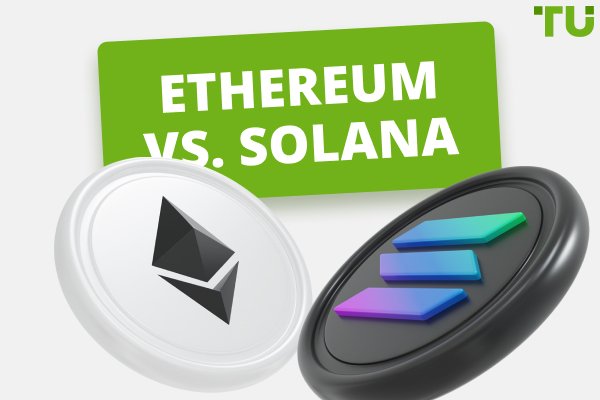Trying to find the best blockchain can be difficult, given that they all have their pros and cons. Solana and Ethereum are the two most well-known blockchains that are often compared, but how do they really differ from each other? Ethereum is the more secure and most decentralized of the two, while Solana is the faster and more economical network.
1. Speed
Solana is fast. The network can execute a block every 400 milliseconds and write 65,000 transactions per second. It is one of the fastest blockchains simply because of these qualities. Ethereum, on the other hand, is very slow.
2. Scalability
In addition to its faster transaction speeds, Solana is known for its improved scalability. Ethereum lacks scalability. Ethereum can currently handle 13 to 15 transactions per second
3. Smart contracts
Ethereum is largely known for its smart contracts capabilities.
4. NFT
Ethereum was not the first blockchain to offer NFT, it is generally considered the most successful and blockchain for NFT.
Is Solana or Ethereum better?
If you find it hard to decide which blockchain is better for you, first ask yourself what your goals are. If you want to make transactions in the most secure blockchain, use Ethereum. If you are only interested in fast transactions and low cost, use Solana. Therefore, Ethereum vs. Solana is a very important topic for traders
What does “Ethereum killer” mean?
Remember how in 2017–2018 almost any crypto project proudly called itself an ecosystem? Or how, in 2021, Play-to-Earn games with 2000s-level graphics suddenly started calling themselves meta-universes?
Crypto loves buzzwords because they sell well. “Ethereum Killer” is no exception. It sounds much better than “smart contract platform” — just as “ecosystem” sounds better than just “app”. But ultimately, “killers” are simply blockchains that (like Ethereum) support smart contracts and allow decentralised applications to be created and run.
The list of “killers” of the 2021 model usually includes Solana, Avalanche, Fantom, Polygon, Polkadot and Cardano. Algorand, Near, Elrond, Internet Computer, IOTA, Harmony, etc. are also sometimes mentioned. All of them offer solutions to Ethereum’s problems, which include low bandwidth, limited scalability and high fees.
These platforms are also often referred to as L1 (layer-1, layer 1 blockchains). The various protocols and scalability solutions based on them are referred to as L2 (although Polygon is somewhere in between L1 and L2. However, some of the “killers” such as Polkadot, Cosmos and Avalanche are capable of supporting multiple independent but interconnected blockchains, so perhaps it would be more correct to call them L0.
Solana processes 177 times more transactions than Ethereum… or does it?
Although Solana’s number of unique addresses is only 4.3% of Ethereum’s and the number of active addresses is only 24.1%, Solana processes 177 (!) times more transactions daily.
The comparison becomes even more impressive if you count the number of transactions per active address: 1184 per day in the Solana network and only 1.6 in the Ethereum network. How is this even possible?
It’s simple: up to 90% of transactions on Solana are validator signatures for votes, meaning no assets are being sent at all. “Real” transactions (swaps, loans, cryptocurrency transfers, NFT sales, etc.) in this case should be around 2.2 million per day — which is still much more than in Ethereum. Most of the transactions are on DeFi-platforms on Solana, such as Atrix and Raydium.

